
San Francisco Real Estate Market Report – August 2022
Across the Bay Area, markets have continued to slow and cool. As illustrated in this report, dramatic demand, inventory, overbidding, price reductions, and year-over-year appreciation rates have usually occurred. Buying and selling continues: Over 5200 home sales were reported to MLS from Napa County to Monterey in July 2022 – many of them selling quickly for over asking price – but that number is down 38% from last year. Median home price appreciation rates in the Bay Area have seen steep declines from those in 2021/early 2022 – and in June/July, San francisco median home price were down year over year. Changes vary in degree by location and market segment, but the direction of the shifts is near universal.
This report will review year-over-year changes in prices, and in supply and demand, reflecting the significant adjustments from the heated (often overheated) conditions recently the norm, but also look at longer-term trends to provide greater historical context. There is also a comparison of home prices within the local market, as well as across the Bay Area.
As of early August, the average, weekly mortgage rate for a 30-year fixed rate loan fell below 5% for the first time since April, and stock markets have seen large rebounds since early July – but these and other indicators have been subject to sudden and often dramatic volatility, and their future directions can’t be taken for granted. Within this report is a link to a review of many of the macroeconomic factors at play.
According to some agents, buyer interest has begun to rekindle with the decline in competition, increase in inventory, and economic changes mentioned above, but if this is part of a broader recovery in demand, it has not yet shown up in the statistics – which are lagging indicators of what’s occurring on the ground right now. Monthly data can be volatile, fluctuating according to a wide variety of factors, including market seasonality. Longer-term trends are more meaningful than short-term fluctuations.
Mid-late summer is usually a much slower period compared to the spring selling season. Autumn typically sees a very substantial spike in new listings and sales prior to the big mid-winter slowdown.
Our reports are not intended to convince you regarding a course of action or to predict the future but to provide, to the best of our ability, straightforward information, and good-faith analysis to assist you in making your own informed decisions. Statistics should be considered very general indicators, and all numbers should be approximate. How they apply to any particular property is unknown without a specific comparative market analysis.
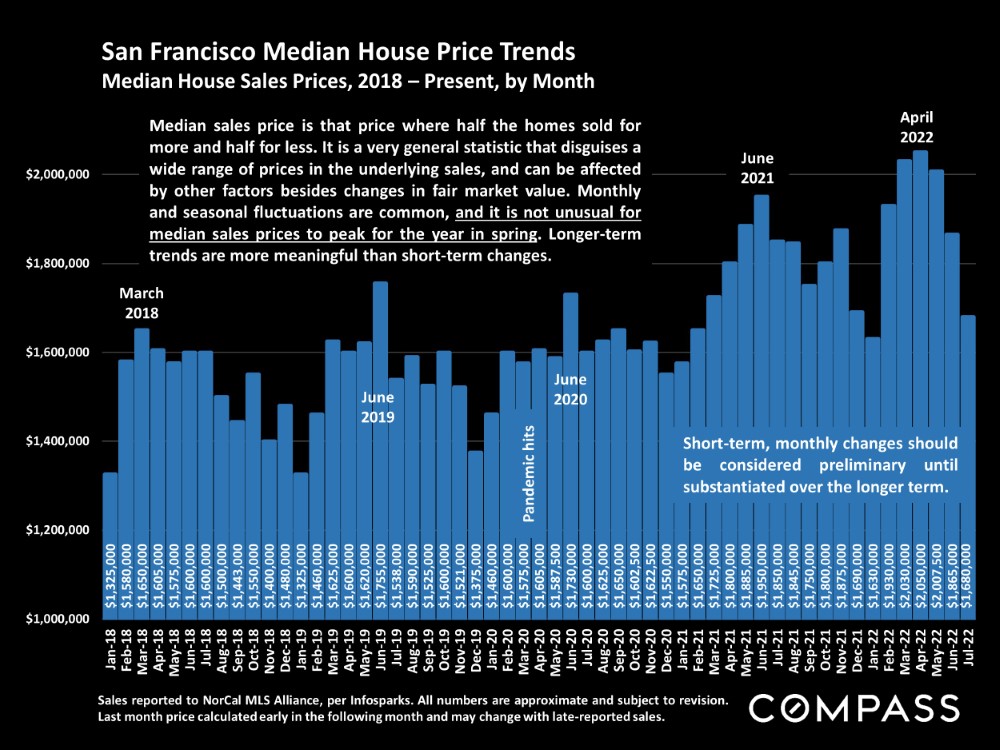
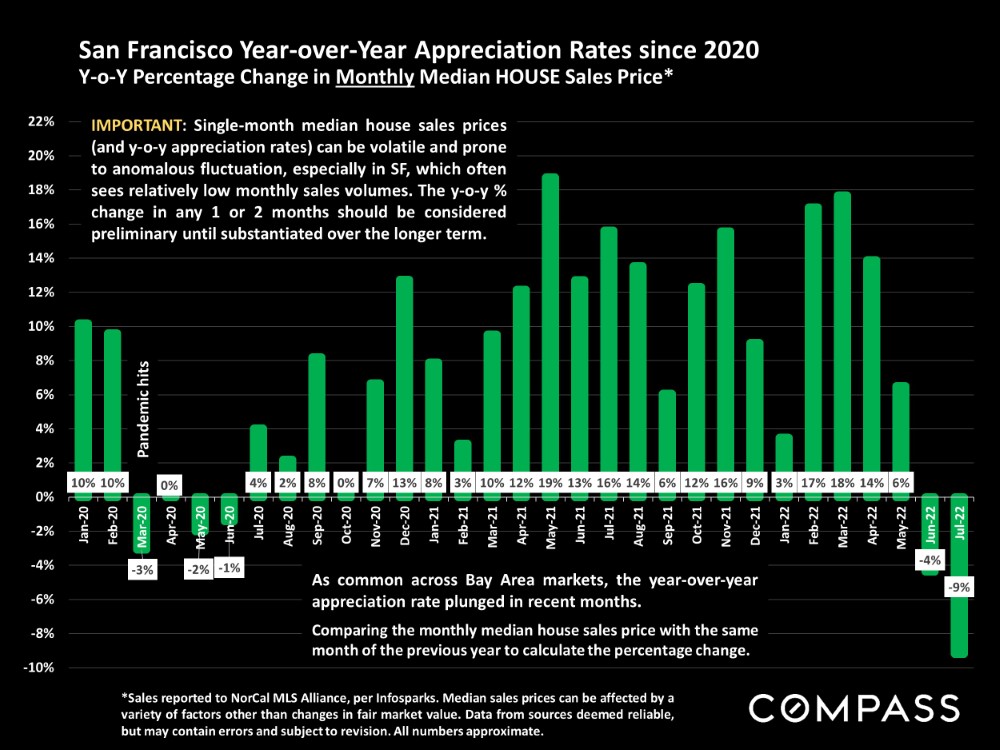
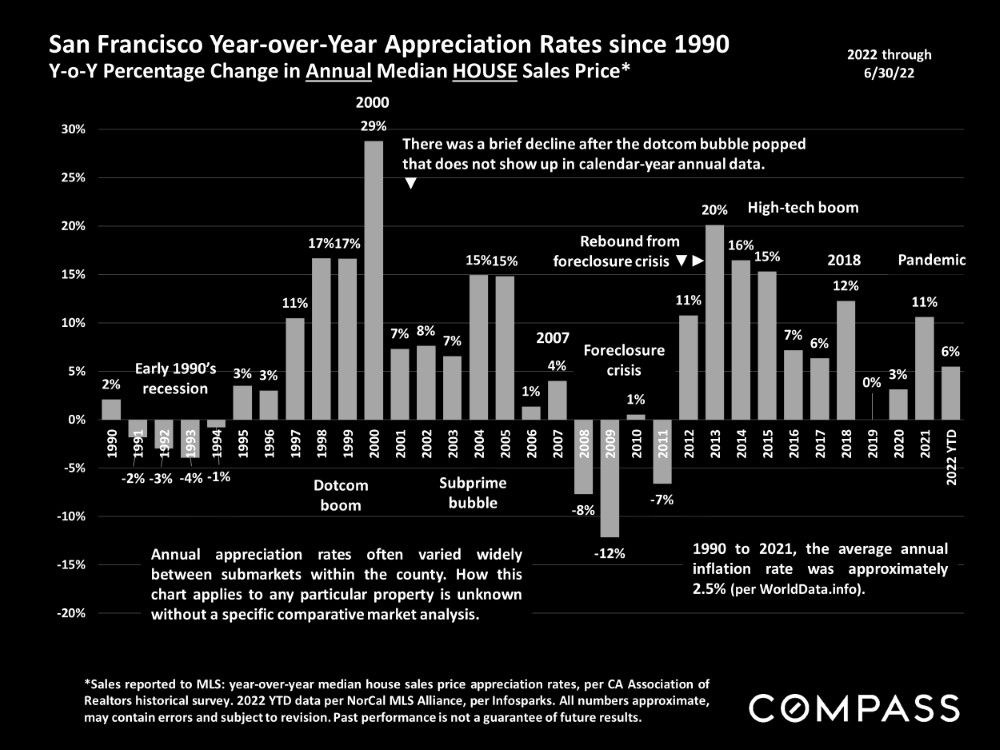
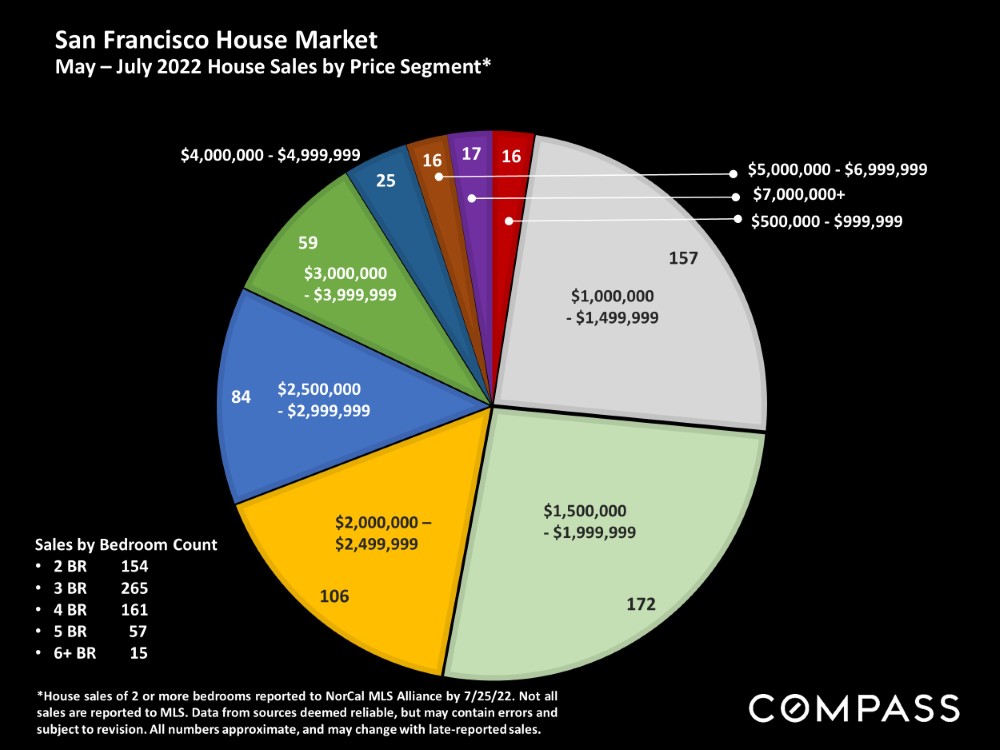
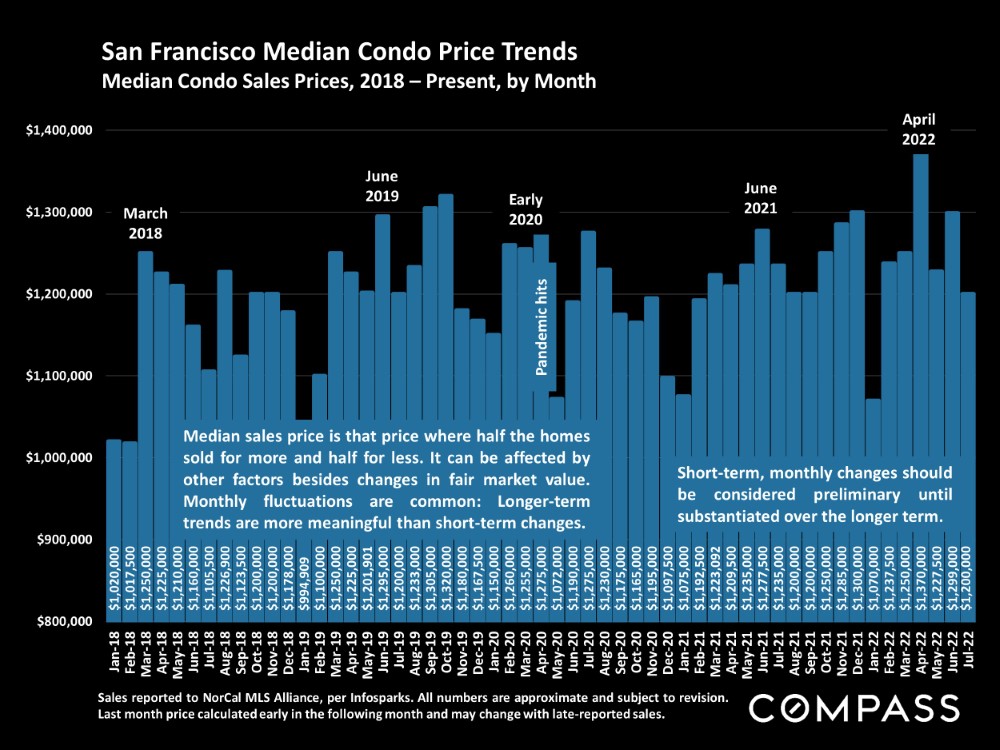
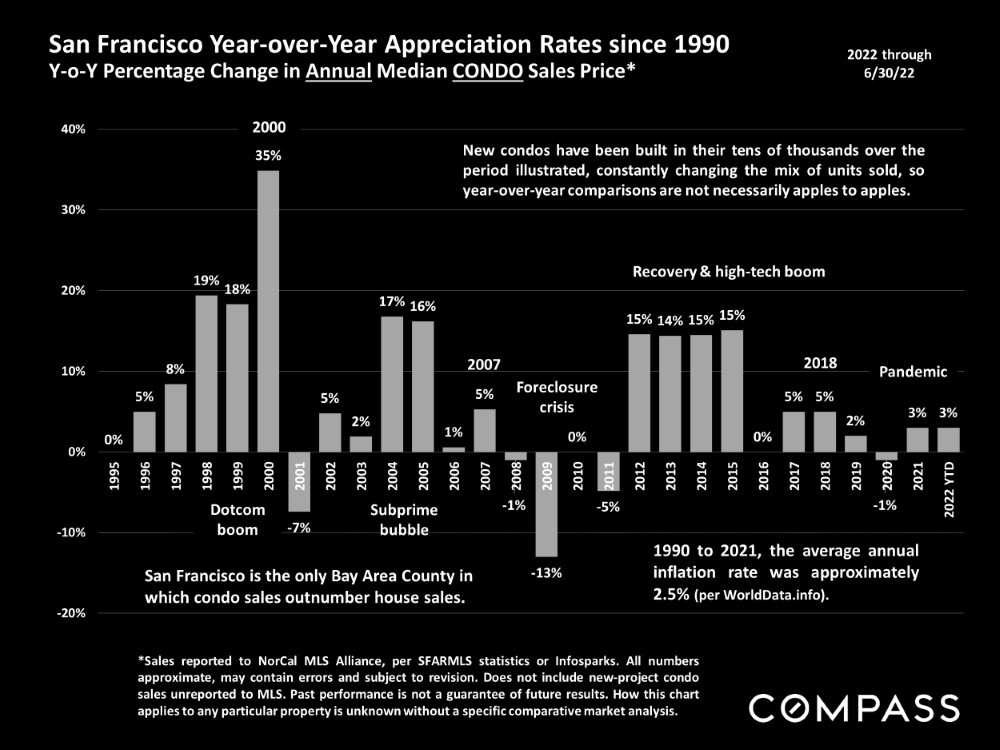
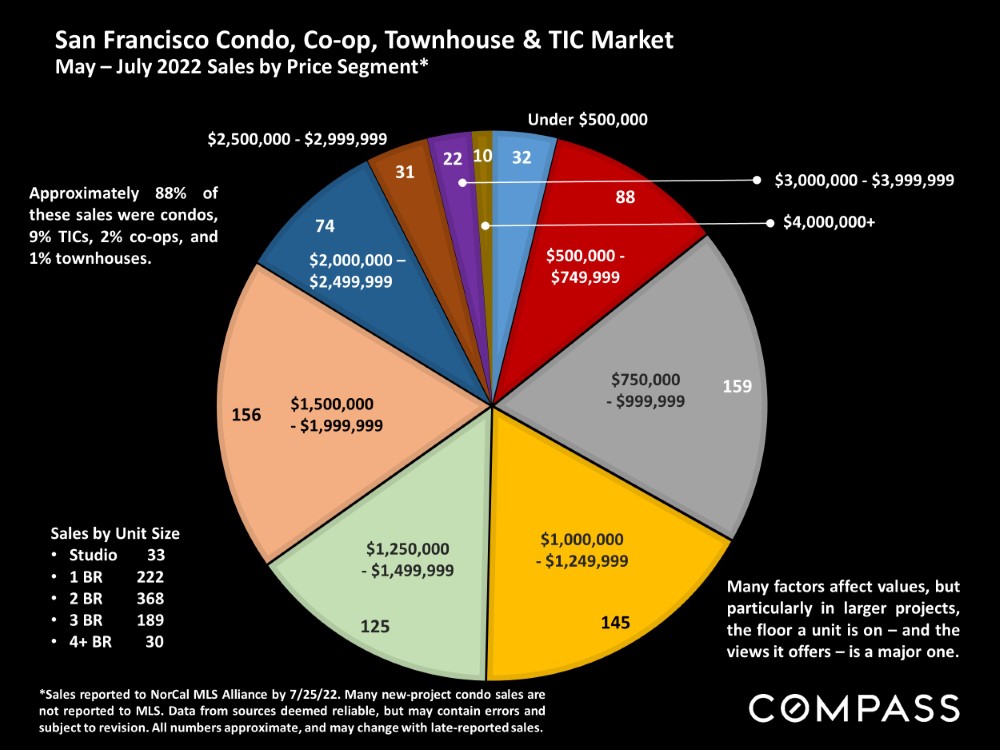
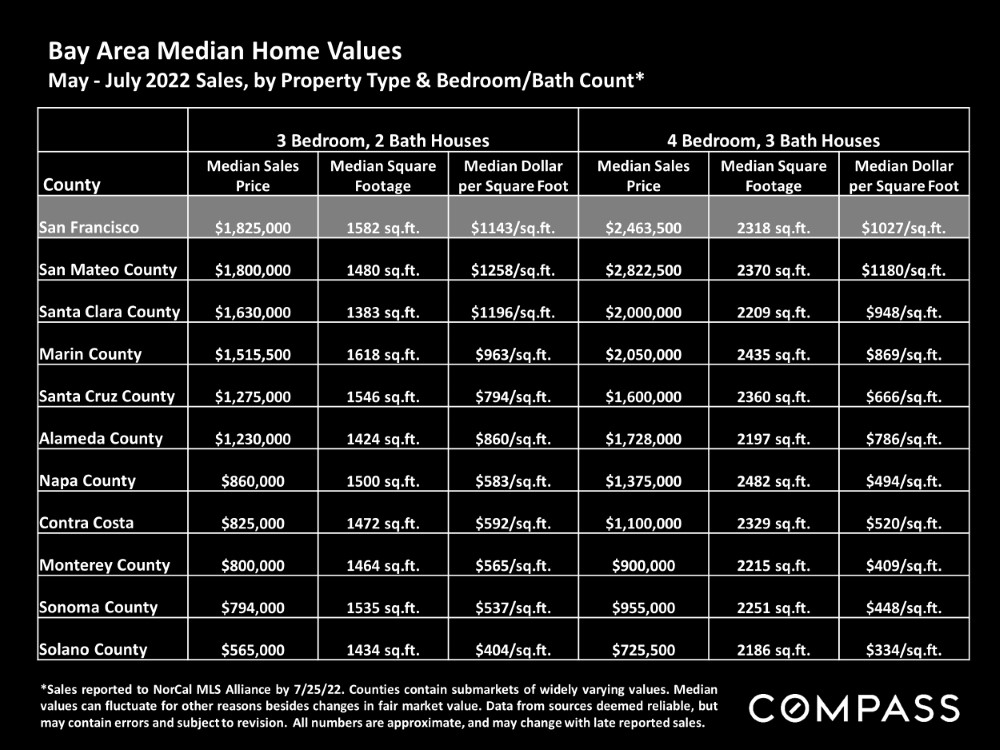
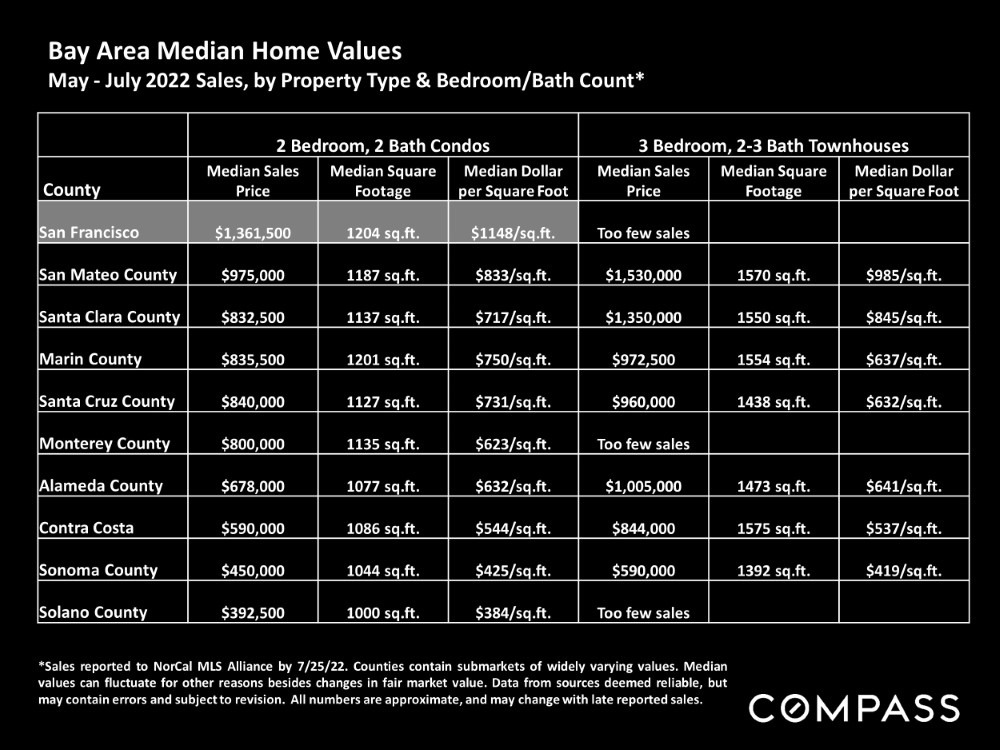
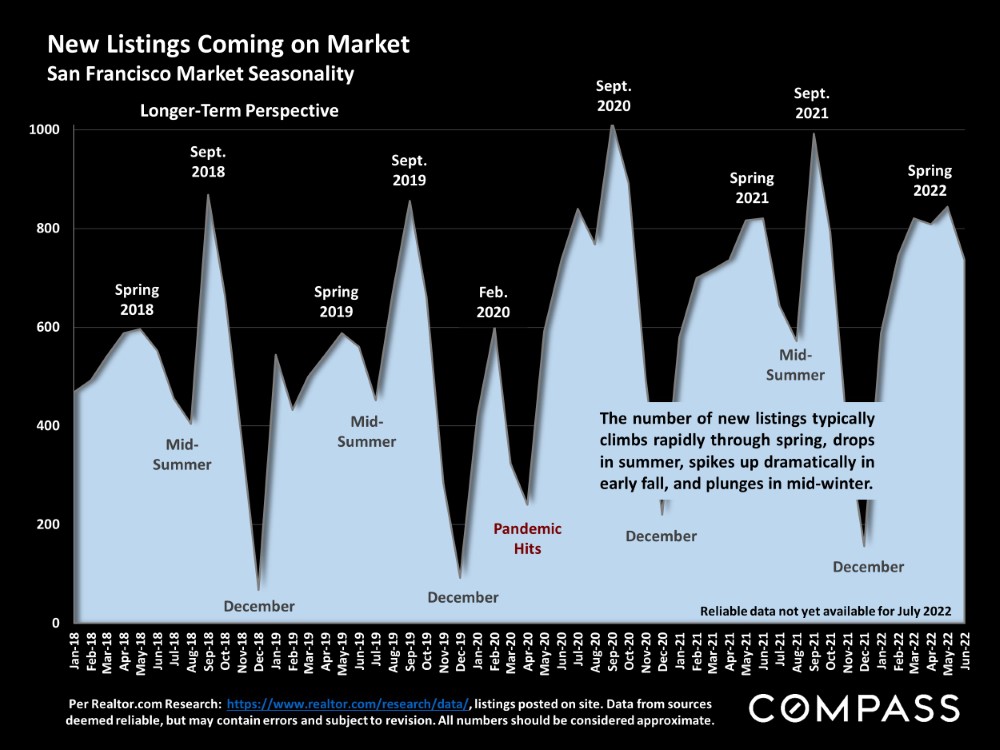
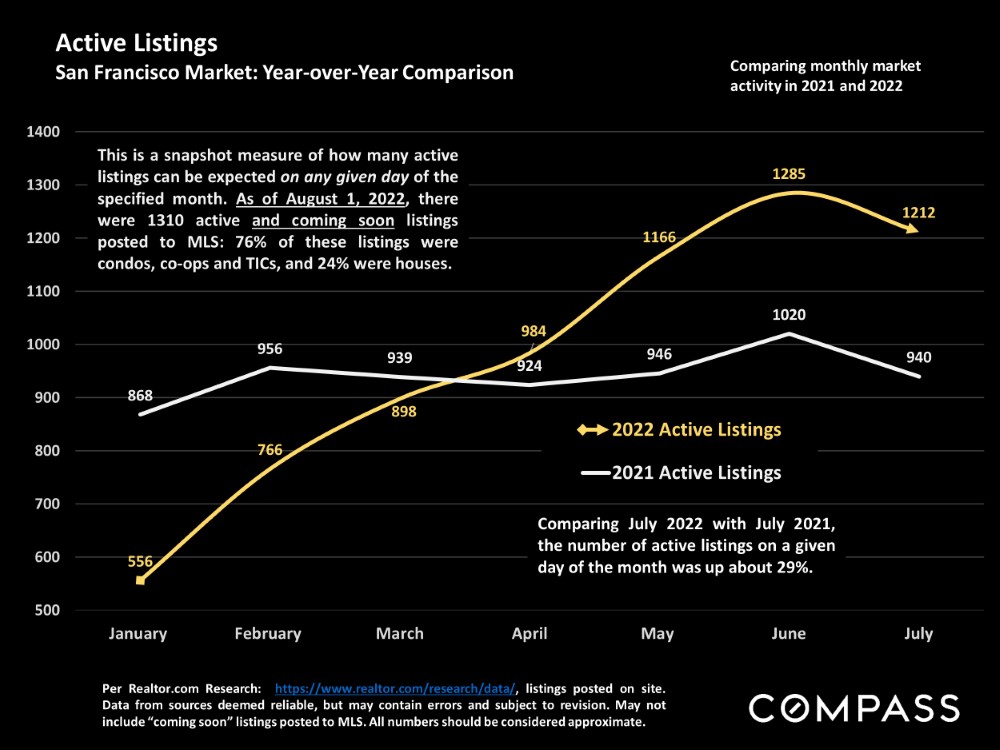
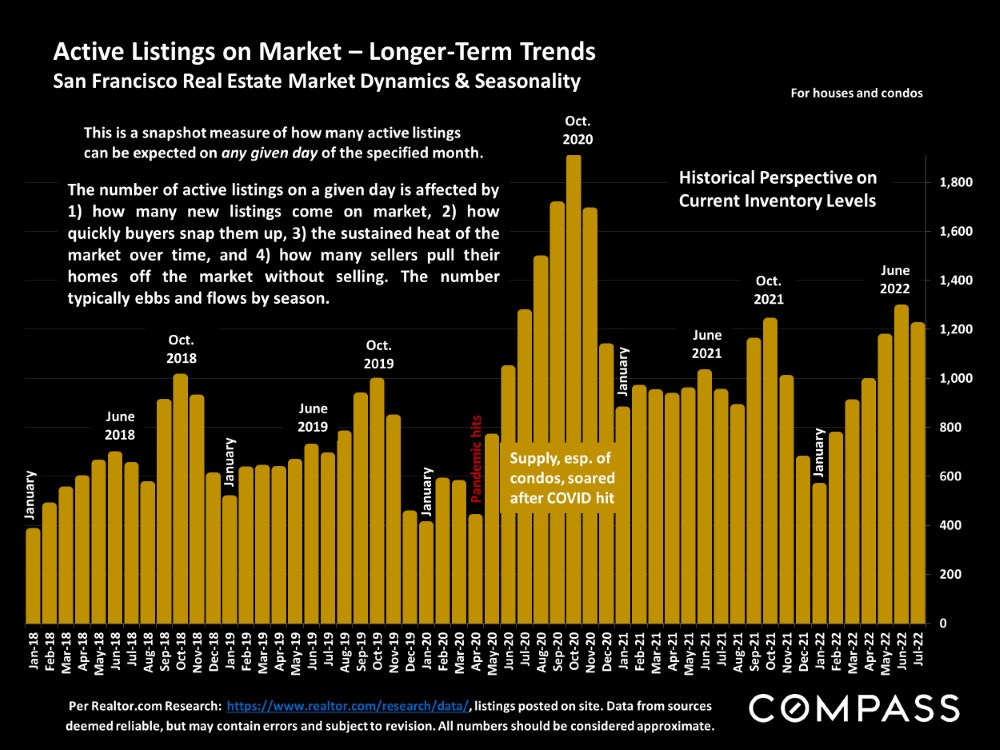
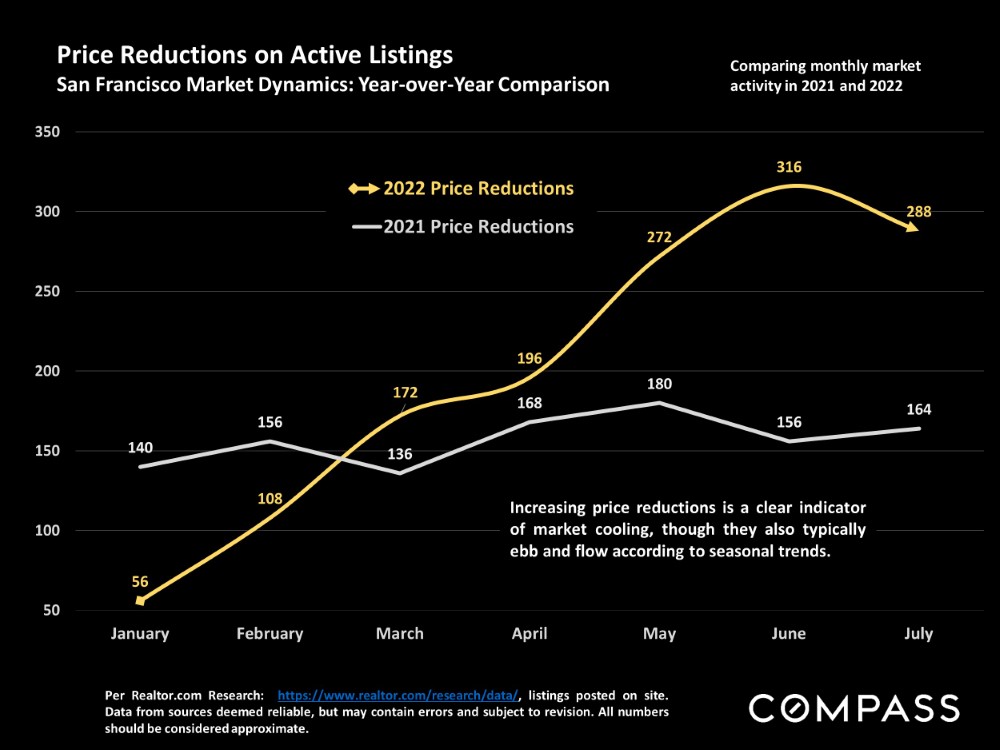
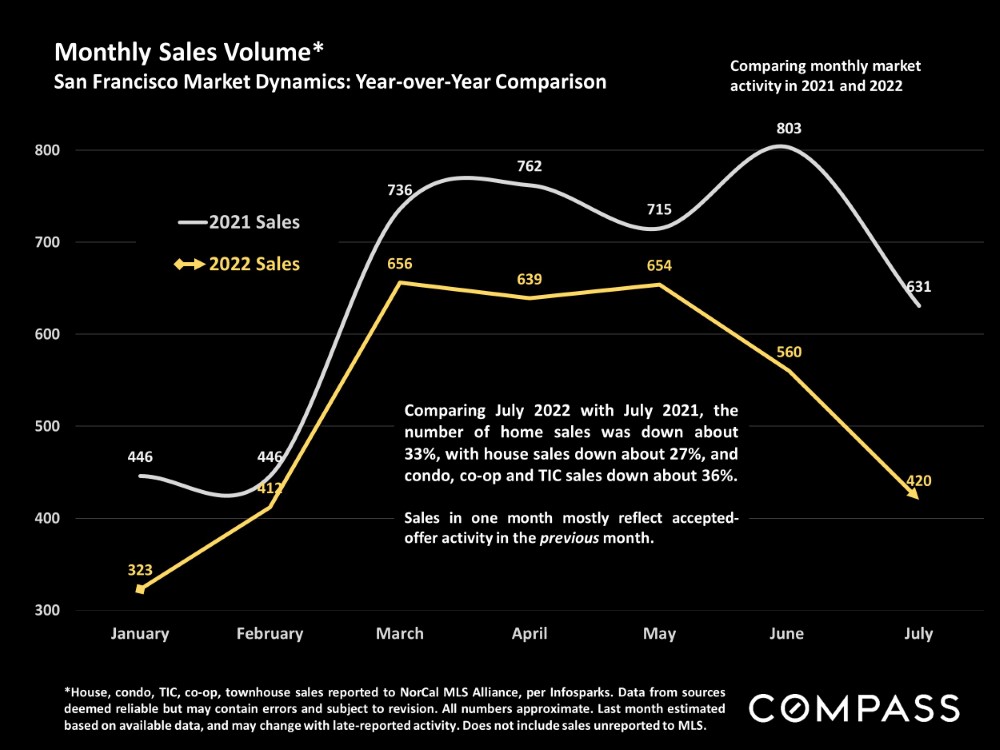


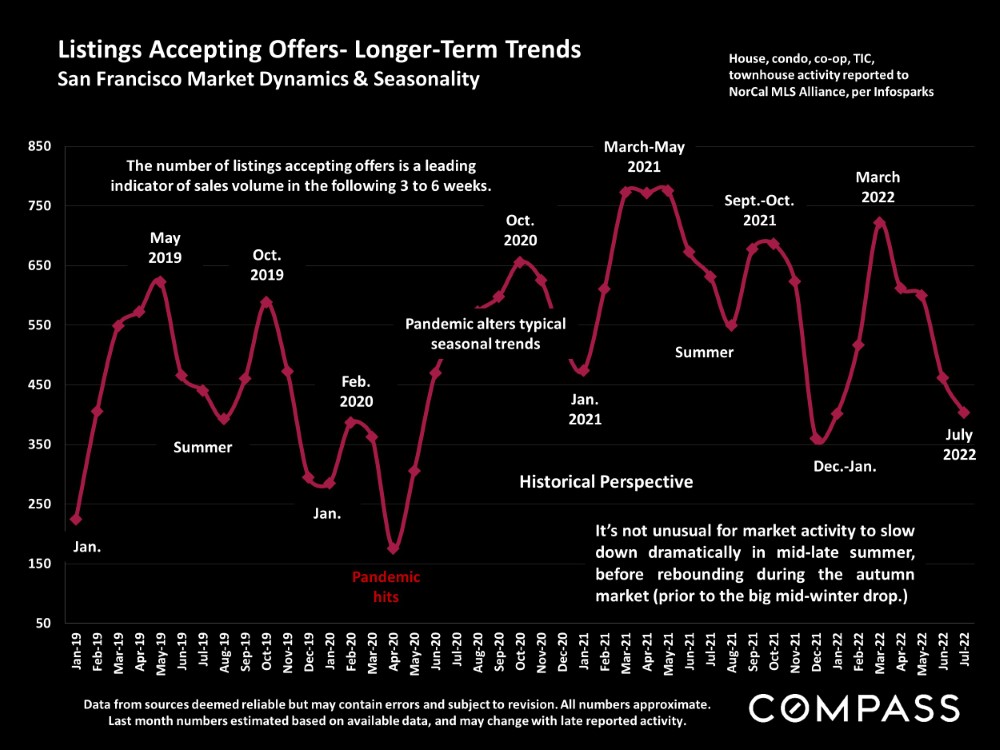
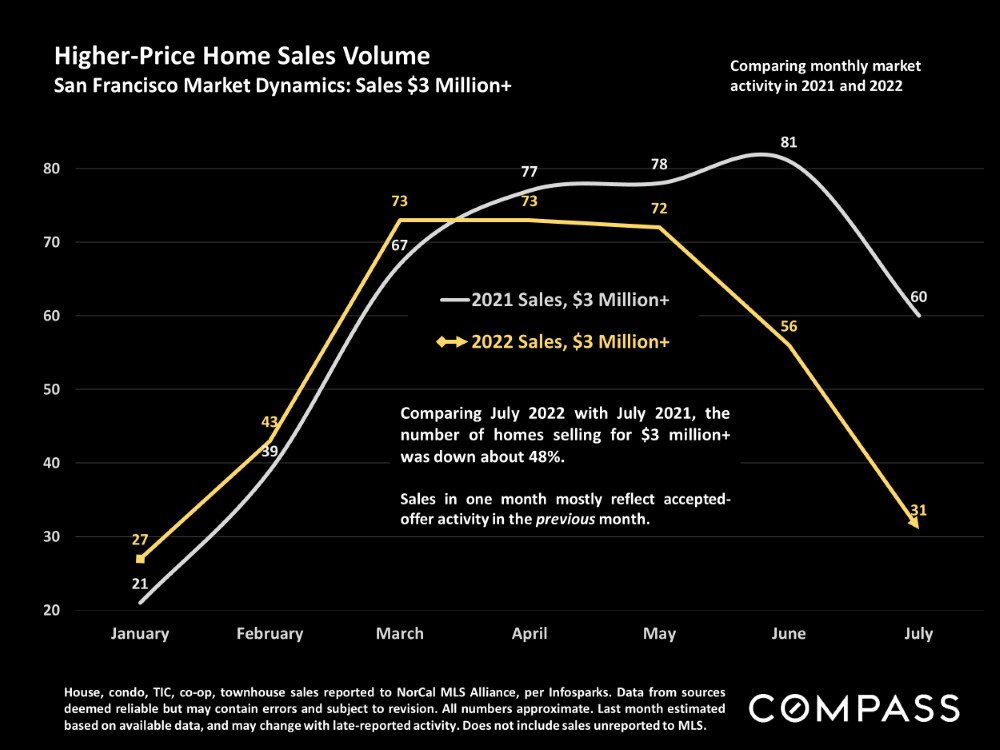
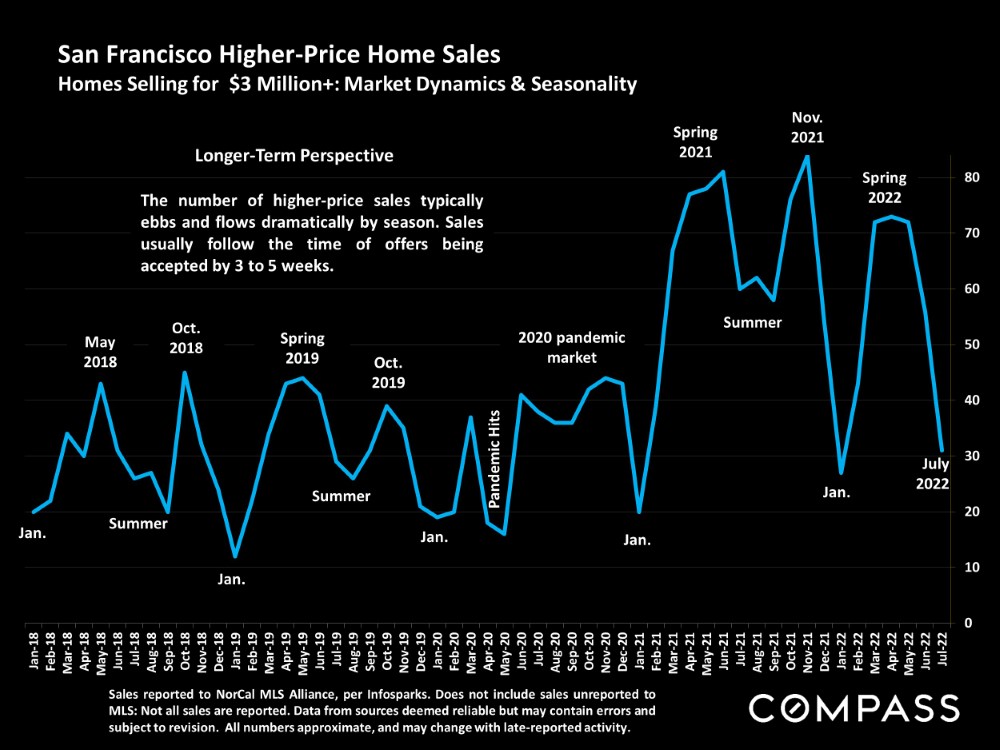
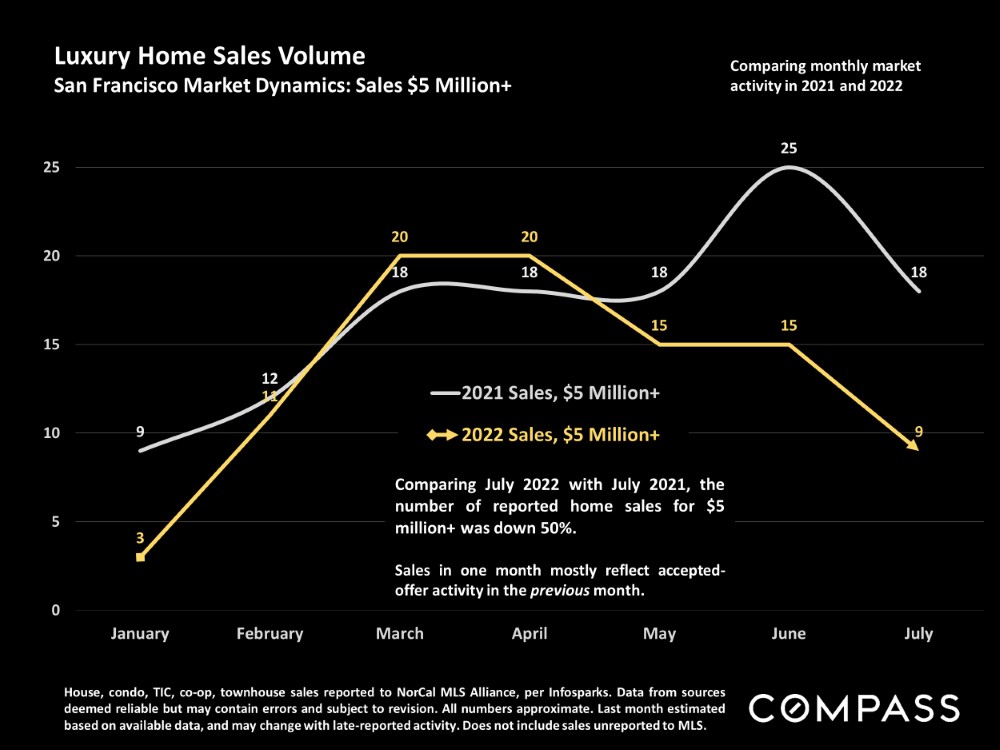
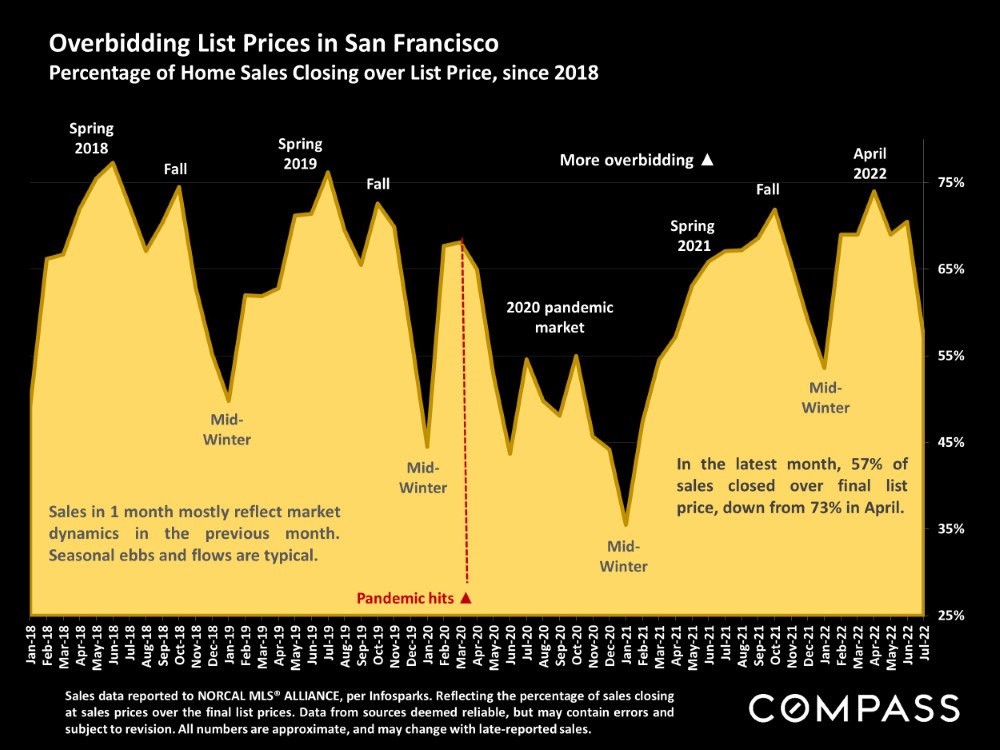
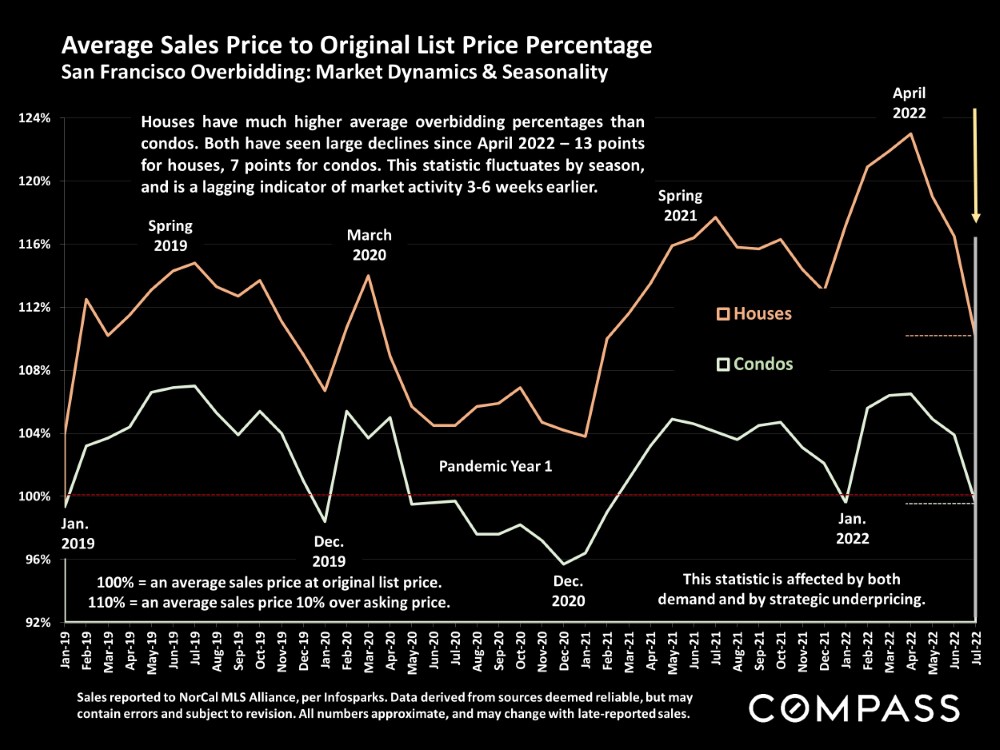
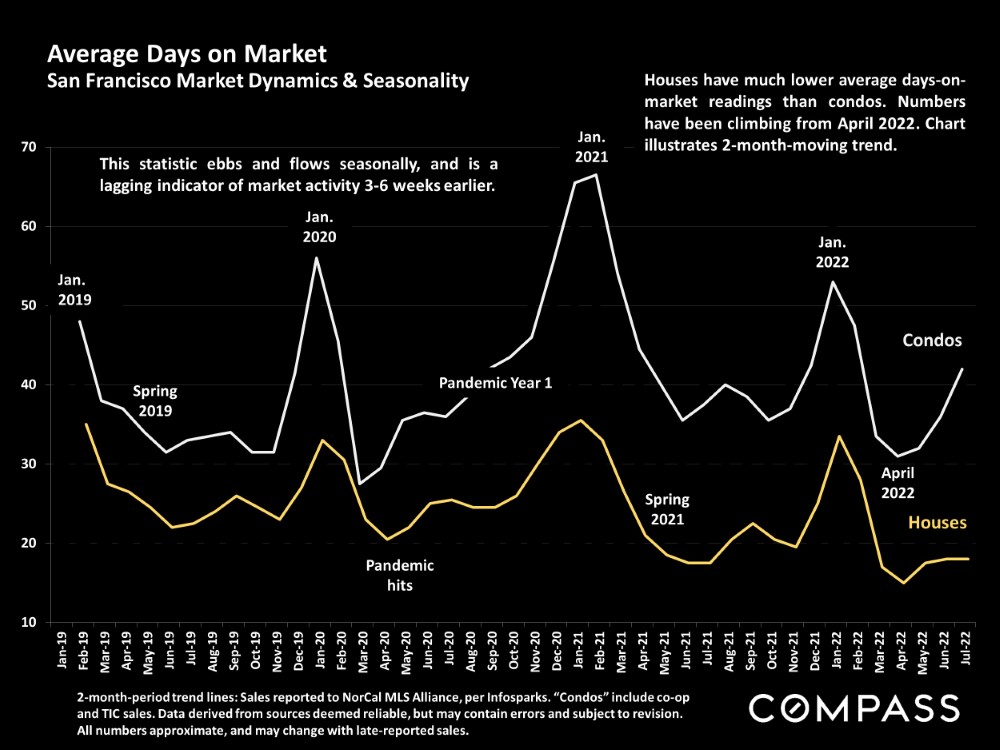
Statistics are generalities, essentially summaries of widely disparate data generated by dozens, hundreds or thousands of unique, individual sales occurring within different time periods. They are best seen not as precise measurements, but as broad, comparative indicators, with reasonable margins of error. Anomalous fluctuations in statistics are not uncommon, especially in smaller, expensive market segments. Last period data should be considered estimates that may change with late-reported data. Different analytics programs sometimes define statistics – such as “active listings,” “days on market,” and “months supply of inventory” – differently: what is most meaningful are not specific calculations but the trends they illustrate. Most listing and sales data derives from the local or regional multi-listing service (MLS) of the area specified in the analysis, but not all listings or sales are reported to MLS and these won’t be reflected in the data. “Homes” signifies real-property, single-household housing units: houses, condos, co-ops, townhouses, duets and TICs (but not mobile homes), as applicable to each market. City/town names refer specifically to the named cities and towns, unless otherwise delineated. Multi-county metro areas will be specified as such. Data from sources deemed reliable, but may contain errors and subject to revision. All numbers to be considered approximate.
Many aspects of value cannot be adequately reflected in median and average statistics: curb appeal, age, condition, amenities, views, lot size, quality of outdoor space, “bonus” rooms, additional parking, quality of location within the neighborhood, and so on. How any of these statistics apply to any particular home is unknown without a specific comparative market analysis. Median Sales Price is that price at which half the properties sold for more and half for less. It may be affected by seasonality, “unusual” events, or changes in inventory and buying trends, as well as by changes in fair market value. The median sales price for an area will often conceal an enormous variety of sales prices in the underlying individual sales.
Dollar per Square Foot is based upon the home’s interior living space and does not include garages, unfinished attics and basements, rooms built without permit, patios, decks or yards (though all those can add value to a home). These figures are usually derived from appraisals or tax records, but are sometimes unreliable (especially for older homes) or unreported altogether. The calculation can only be made on those home sales that reported square footage.
Compass is a real estate broker licensed by the State of California, DRE 01527235. Equal Housing Opportunity. This report has been prepared solely for information purposes. The information herein is based on or derived from information generally available to the public and/or from sources believed to be reliable. No representation or warranty can be given with respect to the accuracy or completeness of the information. Compass disclaims any and all liability relating to this report, including without limitation any express or implied representations or warranties for statements contained in, and omissions from, the report. Nothing contained herein is intended to be or should be read as any regulatory, legal, tax, accounting or other advice and Compass does not provide such advice. All opinions are subject to change without notice. Compass makes no representation regarding the accuracy of any statements regarding any references to the laws, statutes or regulations of any state are those of the author(s). Past performance is no guarantee of future results.




